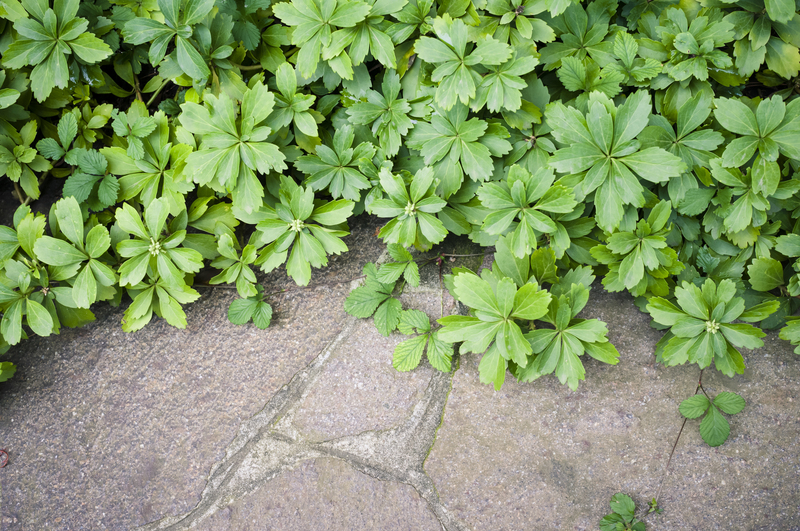How to Strengthen Your Garden Plants for Winter Survival
Posted on 24/05/2025
How to Strengthen Your Garden Plants for Winter Survival
As the crisp autumn air begins to set in, gardeners everywhere face a familiar challenge: preparing garden plants for winter. Whether you tend a small backyard plot or care for extensive beds of perennials, understanding how to strengthen your garden plants for winter survival is crucial for ensuring a vibrant garden in the spring. Winter can be harsh, but with strategic planning and proactive care, your beloved plants can weather the cold and continue to thrive year after year.
Why Is Winter Preparation Essential for Garden Plants?
Many plants enter a period of dormancy during winter, minimizing their energy usage and waiting out the cold. However, freezing temperatures, fluctuating weather, strong winds, and heavy snow can still cause significant stress or even death. Taking steps to fortify garden plants for winter is all about giving them the best possible chance to emerge healthy when warmth returns.
A little foresight not only protects your investment but also rewards you with an exuberant garden at the start of the new growing season. Let's delve into the top strategies for strengthening your garden plants for winter survival.

1. Understand Your Growing Zone & Microclimate
Before you begin, take time to identify your USDA Hardiness Zone. This will help you determine the expected low temperatures and frost dates in your area. Keep in mind that microclimates--small zones within your garden that differ from the general climate--may offer additional protection or pose extra challenges.
- Sunny spots next to walls may shelter delicate plants
- Low-lying areas often trap cold air and may freeze first
- Raised beds can drain and warm faster than ground-level beds
Choosing Hardy Plant Varieties
Selecting winter-hardy plants for your specific region is the first step in ensuring survival. Research plant tags and consult with local garden centers about the best varieties for your area.
2. Gradually Harden Off Your Garden Plants
Just as you would harden off seedlings in the spring, it's important to allow all plants to gradually acclimate to cooler temperatures as autumn arrives. Abrupt changes from warm to cold shock plant tissues, making them more vulnerable to damage.
- Reduce watering and fertilizer as fall approaches--this slows new foliage growth and allows plants to harden their existing stems and roots.
- Avoid late pruning or heavy feeding in September and October; this encourages tender new growth that is easily killed by frost.
3. Mulch Heavily to Insulate Roots
Mulching is one of the most effective ways to protect garden plants for winter survival. A thick layer of organic mulch acts as a blanket, stabilizing soil temperatures, retaining moisture, and reducing freeze-thaw cycles that can damage roots.
- Apply 2-4 inches of mulch (straw, wood chips, shredded bark, or compost) around the base of perennials, trees, and shrubs.
- Keep mulch a few inches away from plant stems to prevent rot and pest problems.
- For tender perennials, consider an extra mulch layer or gently heap leaves around the crowns for added protection.
4. Water Deeply Before the First Ground Freeze
Hydrating plants before the soil freezes is a vital but often overlooked step in winterizing your garden. Soil moisture acts as an insulator, and well-hydrated roots are more resilient against frost damage.
- Give your garden a deep soaking in late autumn during dry spells, focusing on young or shallow-rooted species.
- Do not overwater--soggy soil may cause rot as temperatures fall. Well-draining soil is always best for winter survival.
5. Protect with Row Covers, Cloches, and Windbreaks
Some garden plants, especially vegetables and tender annuals, benefit greatly from physical protection during cold snaps and snowfalls.
- Row covers: Lightweight, breathable fabric that shields against frost while allowing sunlight and moisture to pass through.
- Cloches: Glass or plastic domes placed over individual plants. Great for small or prized specimens.
- Windbreaks: Fences, burlap screens, or evergreen boughs reduce harsh winds and desiccation, especially for evergreens and newly planted shrubs.
Tips for Protecting Non-Hardy Plants
Plants that aren't winter-hardy in your zone can be:
- Moved indoors to a sunroom or garage
- Overwintered as dormant roots or bulbs in cool, dry locations
- Grown in pots and clustered near a sheltered wall for added warmth
6. Prune with Caution
While it's tempting to tidy your garden as fall arrives, hold off on aggressive pruning for most plants. Late pruning can stimulate new growth that's vulnerable to frost, and cutting back stems removes natural protection against wind and cold.
- Remove only dead, diseased, or damaged wood before winter.
- Leave ornamental grasses and some perennial stems standing; they insulate crowns and provide insect habitat.
7. Feed Your Soil, Not Your Plants
Autumn is the perfect time to enrich your soil rather than boost plant growth. Amend beds by adding compost or well-rotted manure. This improves structure, promotes beneficial microbes, and ensures plants have rich soil to draw on when they awaken in spring.
- Avoid rich nitrogen fertilizers in fall; these encourage soft, green growth that's highly susceptible to frost.
- Opt for compost, leaf mold, or slow-release organic matter.
8. Support Stems and Secure Plant Structures
Winds, sleet, and heavy snow can topple fragile stems or break branches. Make sure to:
- Stake top-heavy perennials and tall plants (such as delphiniums or sunflowers) firmly.
- Bundle together delicate stems with soft ties, reducing breakage from snow loads.
- Secure trellises, arbors, and climbing frames so they don't collapse under winter weight.
9. Monitor for Garden Pests
Some pests overwinter in leaf litter or garden debris. Keeping your garden tidy doesn't just improve its appearance--it helps break pest and disease cycles, too.
- Remove diseased foliage and fruit from the ground and compost pile.
- Sterilize tools and pots at the end of the season to prevent pathogens from spreading.
However, leave some undisturbed areas for beneficial insects, such as ladybugs and native pollinators, which shelter in winter debris.
10. Plan for Next Spring
As you strengthen your garden plants for winter survival, use this time to plan improvements for next year. Take notes on which plants struggled and which thrived through the cold; you'll be better equipped to select robust varieties, adjust planting locations, or install additional protection.
Common Questions about Winterizing Garden Plants
Should I Cut Back All Perennials Before Winter?
Not always. Many perennials benefit from leaving foliage and stems intact over winter. The dead growth insulates the crown and protects emerging shoots. Cut back only after the last frost in spring.
Do Potted Plants Need Special Care for Winter?
Yes--roots in containers are more exposed and can freeze rapidly. Move pots to sheltered locations, insulate with bubble wrap or burlap, and cluster together for protection. Consider sinking pots into the ground or moving them indoors.
When Should I Stop Watering My Garden?
Reduce watering as temperatures drop, but ensure plants are well-hydrated before the soil freezes. After ground freeze, avoid watering until thaw.

Top Tips to Strengthen Your Garden Plants for Winter Survival
- Choose native and hardier plant varieties suited for your climate.
- Mulch generously to insulate and protect roots from winter extremes.
- Moisture management is key--neither too dry nor too waterlogged is ideal.
- Shield with windbreaks or covers when extreme weather is forecast.
- Prune only what's necessary and avoid stimulating late growth.
- Amend your soil with organic matter to enhance spring success.
- Stake and secure tall or fragile specimens before winter storms roll in.
Conclusion: Give Your Garden the Best Chance for Winter Survival
With thoughtful preparation, you can strengthen your garden plants for winter survival and enjoy lush, healthy growth next year. Remember, winterizing is a process that starts with smart plant choices and continues with consistent, season-appropriate care. From mulching and watering to staking, covering, and amending soil, each action reinforces your garden's natural resilience.
As the season shifts, equip your garden with these strategies, and look forward to the first green shoots of spring--knowing your plants have weathered winter's worst and are ready to flourish once more.
Happy gardening, and may your plants remain strong through all the challenges that winter may bring!

